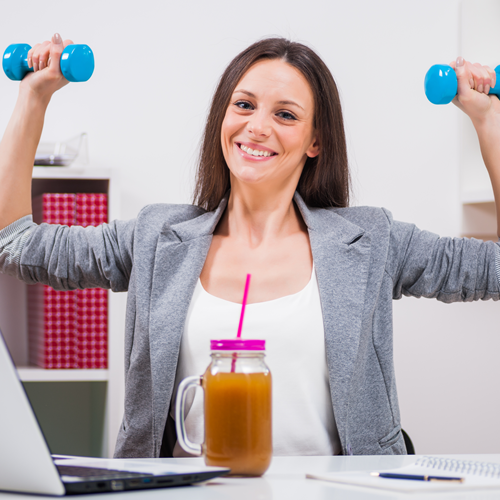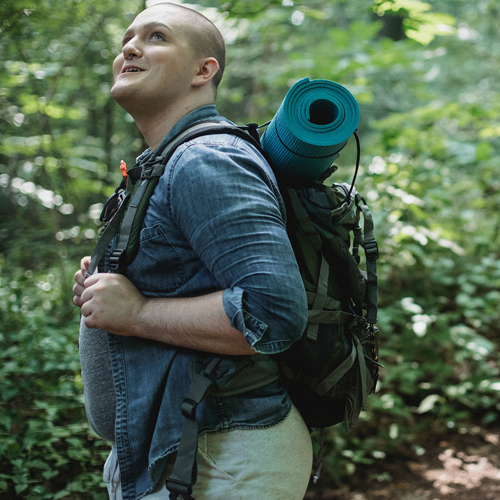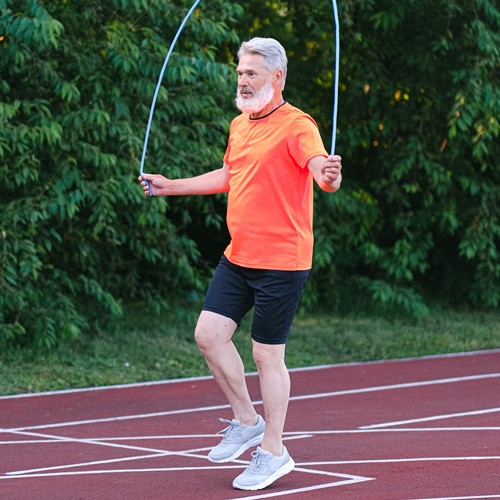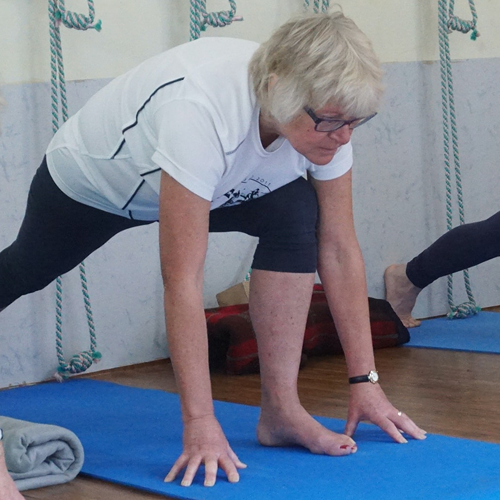Physical activity and movement will improve your health. The more you do it the better you will feel. So do it often.
GIVE ME FIVE: 5 FITNESS FACTS TO HELP YOU MOVE
KNOW HOW MUCH IS ENOUGH (HINT: SOME IS ALWAYS BETTER THAN NONE!)
The Physical Activity Guidelines for Americans recommend that adults get 150 minutes of moderate-intensity (or 75 minutes of vigorous–intensity – see “Talk Test” below) aerobic physical activity each week to gain health benefits. That may sound like a lot, but it is only 30 minutes on most days of the week. You can still gain health benefits by breaking up your physical activity into 10-minute segments throughout the day. Keep in mind that SOME is always better than none, so try adding more movement whenever you can even if you don’t think you will meet the recommendation!
- Aerobic Activity: Aerobic activity, also known as “cardio,” moves oxygen around your body and helps keep your heart, lungs, and circulatory system healthy. Examples include walking, running, swimming, biking, and jumping.
- Muscle Strengthening: It is also recommended to do muscle-strengthening activities like lifting weights or using resistance bans at least twice a week. Just like aerobic activity, short bursts of muscle-strengthening activities can be incorporated into your day.
TAKE 10
When you are crunched for time you don’t have to give up your workout. Try a 10-minute activity burst to get your blood pumping and boost your energy. Getting ten minutes of continuous moderate activity three times a day can give the same health benefits as 30 minutes of nonstop exercise.
- 10 Minutes of Cardio/Aerobic Activity:
- Use 10 minutes of your lunch hour to go for a brisk walk.
- Walk up and down the stairs at work for 10 minutes.
- Work off some of the stress of the day by dancing to your favorite music for 10 minutes (about three songs).
- 10 Minutes of Strength Training:
- Start your day with 10 minutes of strengthening exercises, such as lunges, air squats, and bicep curls.
- While watching TV, slowly and carefully lift and lower weights for 10 minutes. Use dumbbells, barbells, or whatever heavy items you have on hand.
- If you’re on a long phone call, do 10 minutes of squats or calf raises to strengthen lower-body muscles.
TRY THE TALK TEST
If you are unsure how to measure the intensity of your aerobic activity, try the Talk Test! The Talk Test is a simple way to gauge relative intensity. In general, if you can talk while you are active, then you are participating at a moderate level. If you can only say a few words without stopping to catch your breath, then you are engaging in vigorous activity.
NO WEIGHTS, NO PROBLEM!
If you don’t have weights or resistance bands available for muscle strengthening, just use what you’ve got! Household items like bottled water, soup cans, sand bags, and even small children can be used as weights. You can also use your own body for resistance. Bodyweight squats, lunges, calf-raises, push-ups, planks, and sit-ups all work to strengthen your muscles.
MOVE FOR YOUR MIND
Physical activity has a significant impact on emotional, intellectual, and mental well-being. Something as simple as walking can boost your self-esteem and help you feel more in control of your own self-care! Being active outdoors is particularly beneficial to mental health. Fresh air and natural sunlight increase relaxation signals in our bodies by lowering blood pressure and decreasing the stress hormone, cortisol. Whether you choose to walk, run, bike, or garden, the fresh air and movement will be good for your body and mind!
Sources: Current Guidelines / Measuring Physical Activity Intensity / How 10 Minutes Can Be a WorkoutTips to get moving
Walking Maps
- Chinden Campus Map, Boise
- The Capitol Mall Tunnel Steps, Boise
- Portneuf Wellness Complex, Pocatello
- Downtown Boise Loops:
- Fort Street Loop, Boise, 12 minutes
- Hyde Park Loop, Boise, 38 minutes
- Julia Davis Park Loop, Boise, 45 minutes
- Kendall/Irving Street Loop, Boise, 15 minutes
- Sherman Street Loop, Boise, 41 minutes
- Veterans Loop, Boise, 30 minutes
- Boise River Greenbelt
Help us expand our maps! Health Matters would like to provide more walking maps from all areas of the state. If you have a favorite loop please email it to healthmatters@dhr.idaho.gov.
 Official Government Website
Official Government Website





